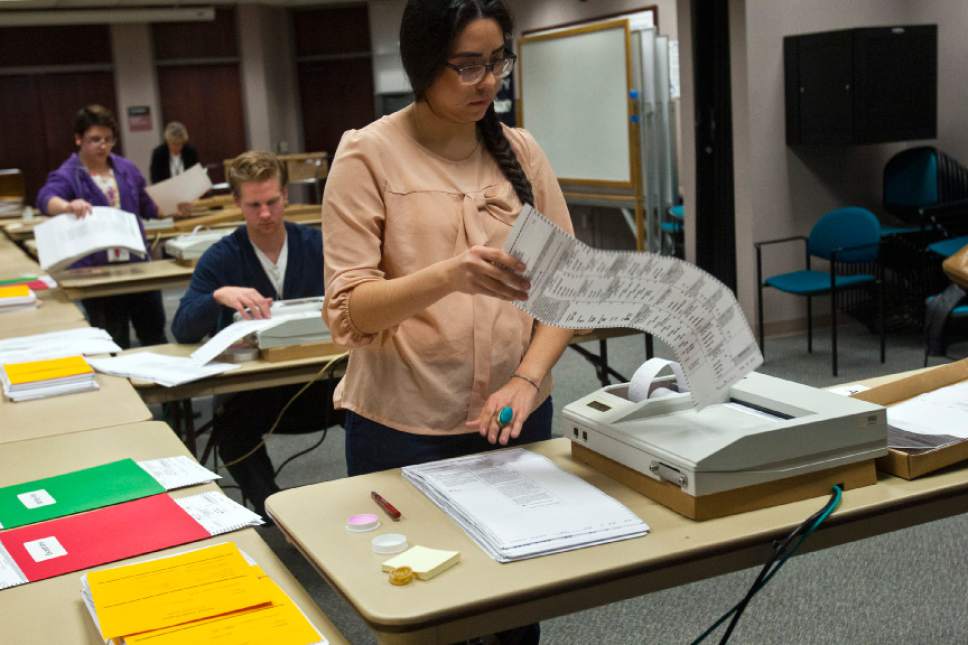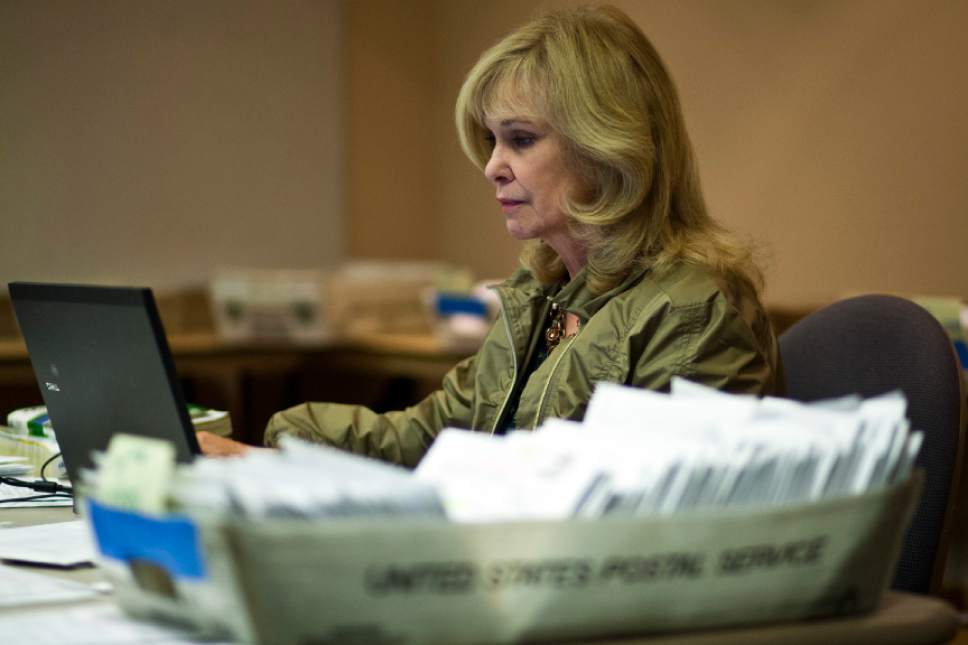This is an archived article that was published on sltrib.com in 2016, and information in the article may be outdated. It is provided only for personal research purposes and may not be reprinted.
Long lines to vote in Tuesday's caucuses reinforced Salt Lake County Clerk Sherrie Swensen's perspective that vote-by-mail is the way to go for this year's primary and general elections.
She has made that system the foundation of her plan for dealing with the hundreds of thousands of ballots that will be cast in the Nov. 8 general election and the June 28 primary before that.
While mail-in voting is the "best and most convenient" approach to dealing with a high-interest election, Swensen told the County Council last week that "I would never run a vote-by-mail election only without the convenience of having voting centers, too."
So her plan includes traditional polling places on election days, early-voting locations in different parts of the valley, and scattered drop boxes where people can deposit ballots if they don't trust the mail or are too late to meet the postmark deadline (the day before the election).
Exact locations will be listed on the clerk's Web page — http://www.slco.org/clerk.
Doing it this way also saves money, Swensen said. Even with the purchase of 100 laptops and the lease of a scanner to help with tabulations, she figures to save $400,000.
Much of that savings comes from using just 600 of the county's 3,100 electronic voting machines, because vote-by-mail will sharply reduce the number of people showing up at the polls.
That cuts costs, she said, by reducing the amount of pre-vote testing required to ensure the machines are working properly, the hours spent training polling-place judges and transportation costs.
"We have to hire a company to transport machines, they're so heavy," Swensen said.
Salt Lake County has about 447,000 active registered voters, she said, but the number is growing. New voter registrations were "sky high" Tuesday, said election division director Rozan Mitchell.
For the clerk's office, that's all the more reason to rely heavily on vote-by-mail.
Swensen said turnout for last November's municipal elections was a record 40 percent, with 85 percent of those voters mailing in their ballots before Election Day.
"Forty percent is phenomenal for that kind of an election," she said. "I really believe it can be attributed to the fact we did most by mail."
To make it extra convenient for registered voters, the county will send out notices that ballots are coming. When ballots arrive at residences a week or so later, Swensen said, they will be accompanied by a postage-paid return envelope.
"People won't need to worry about getting stamps," she said. "It's a great incentive to return their ballots."
By and large, council members liked her approach. But before they sign off on it at Tuesday's meeting, several had concerns they asked her to resolve.
The main worry, shared by west-side council members Steve DeBry and Michael Jensen, was that there were not enough early-voting locations and drop boxes on the valley's west side, especially the fast-growing southwest.
"I just want to be fair and equitable," said DeBry, encouraging Swensen to find additional locations in Riverton, Bluffdale and Herriman, all of which are in his district. "I'm a huge proponent of having more people vote."
Jensen said this year's vote is especially important to his constituents in Magna and Kearns, which are becoming metro townships and selecting full slates of council members to run this new form of government.
"This is their big year out in the townships," he said, observing the county often has been criticized for not caring enough about these unincorporated areas. "Maybe if we could show them some more love."
Jensen offered to pitch in as well, saying election officials could use parts of fire stations in different communities, including a new facility on the Herriman-Bluffdale border. He is chief of the Unified Fire Authority, which covers large portions of the county.
Council Chairman Max Burdick's qualms focused on the security of voting by mail. How does the clerk's office know, for instance, if a mailed-in ballot actually was completed by the person whose name is on it?
"I like the convenience factors," he said, "but as we move closer to convenience, is that a threat to security?"
Mitchell tried to assuage his concerns, noting that the clerk's office is constantly updating its voter-registration lists and has multiple signatures for each voter.
"We have found a lot of people have their messy signatures and their nice signatures," she said. Having multiple signatures on file can help election-division clerks "look for things in a signature to make sure what's valid and what's not," whether it's messy or neat.
Ultimately, Swensen said, "it means a lot to me to have every single eligible voter participate."





